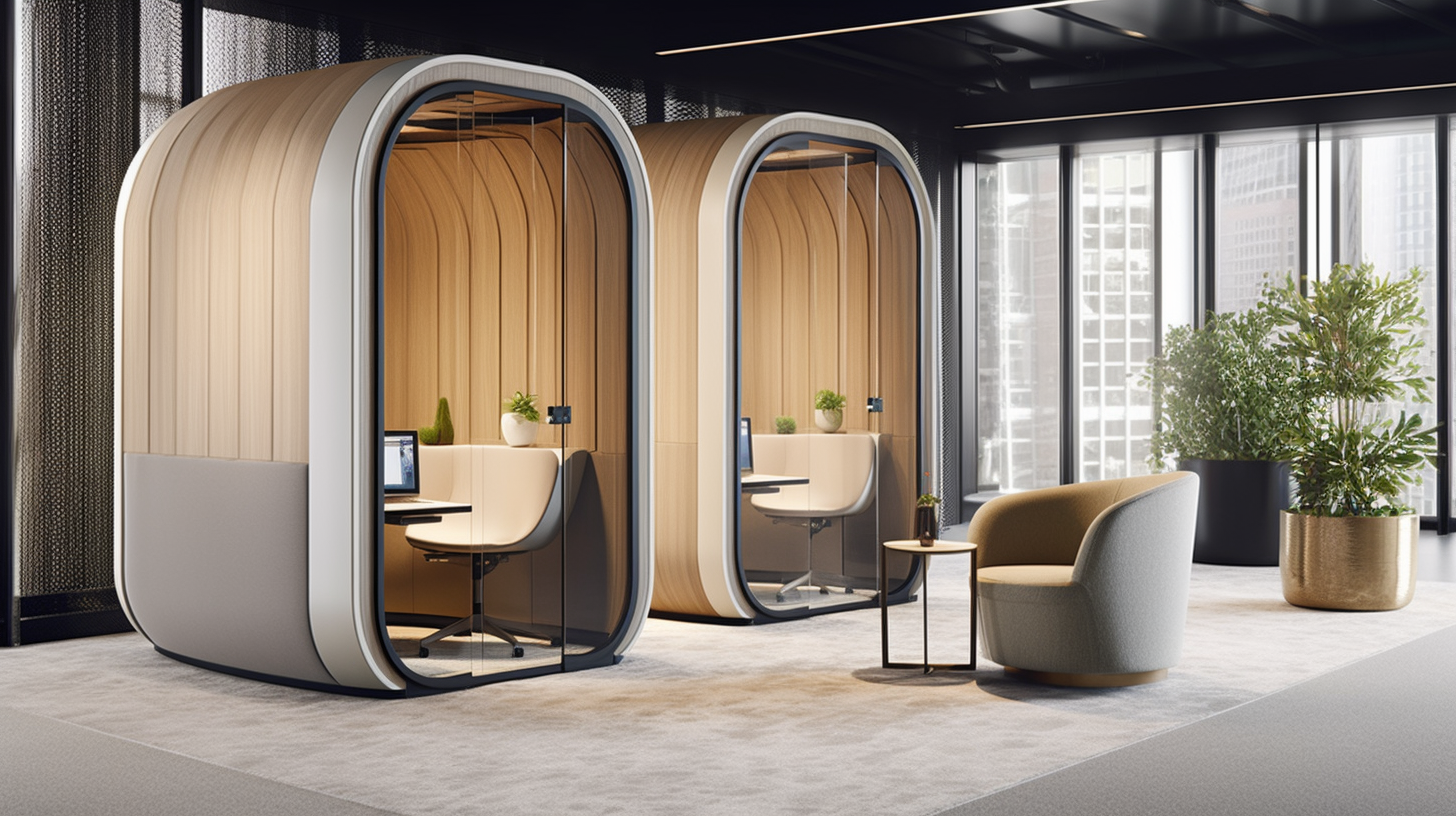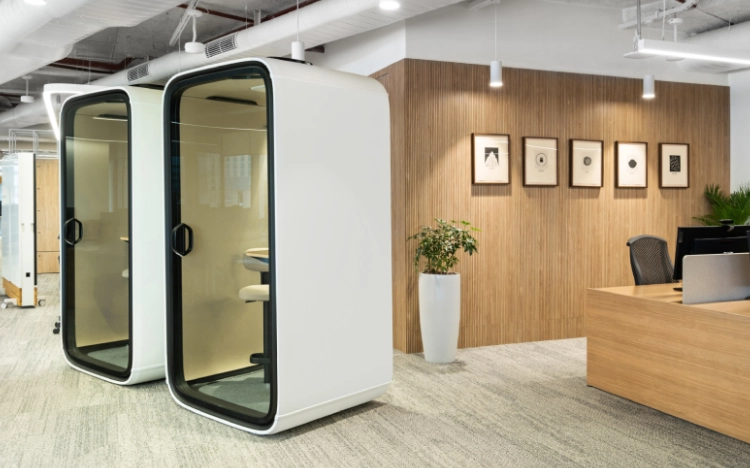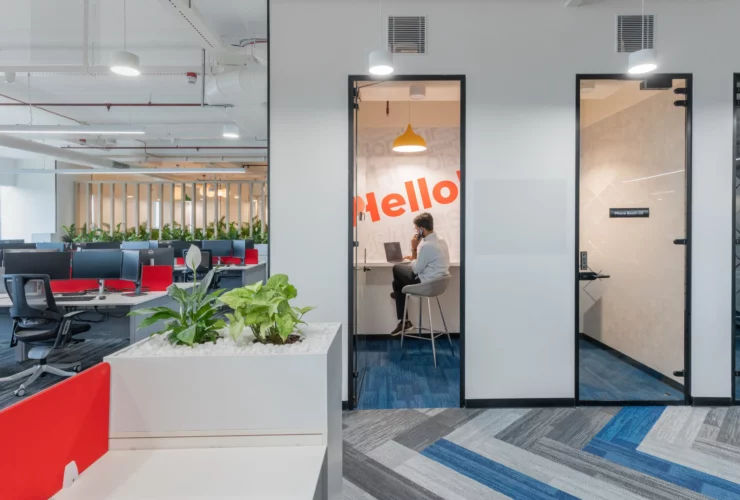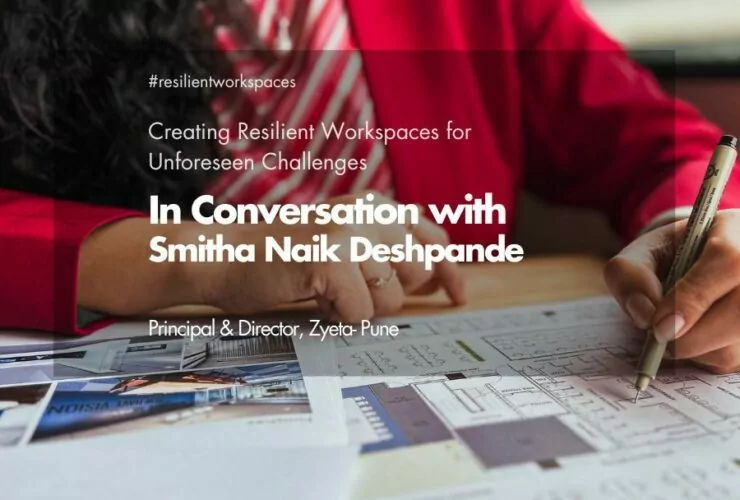Designing Focus Spaces: Boosting Productivity and Concentration in the Workplace
Employees with desk jobs get distracted every 10.5 minutes.
This distraction can be caused by anything from a notification bell on the phone to relationship stress or an interruption from coworkers- all of which are inevitable. Once distracted, it takes an average of 23 minutes and 15 seconds for people to get their minds back to work. Such loss of focus causes delays in task completion and reduces quality of work thereby impacting employee productivity. This can also lead to an increased level of stress and job dissatisfaction among workers. Therefore, it is vital for organizations to develop workplace designs and strategies that boost focus and work efficiency.
What is a Focus Space?
A focus space is a designated area in the workplace that is designed to help employees concentrate and stay focused on their work. The purpose of a focus space is to create a distraction-free environment that minimizes interruptions and promotes productivity. It may also house certain tools or resources such as noise-canceling headphones, a whiteboard, or a notepad for jotting down ideas. These resources can allow employees to work more effectively and efficiently.
Which Attributes Make a Highly Productive Focus Space?
The aim of any focus space is to promote attentiveness and creative thinking- which can be achieved through an appropriate spatial setting. One of the key attributes of such a space is adequate lighting, that can help reduce eye strain and promote mental alertness. Natural light is ideal, but if that’s not possible, adjustable artificial lighting can also be effective. Additionally, the space should be soundproofed to minimize noise levels and avoid distractions.
Another significant attribute of a highly productive focus space is user comfort and ergonomics. The space should be designed to promote good posture and reduce strain on the body. The temperature should also be maintained at a comfortable level to avoid distractions and keep employees focused. In addition, the space should be easily accessible and customizable to accommodate the needs and preferences of individual employees. Providing amenities such as water coolers, coffee machines, or comfortable seating can also contribute to a more inviting and productive focus space.
Design Interventions to Create Focus Spaces in a Workplace
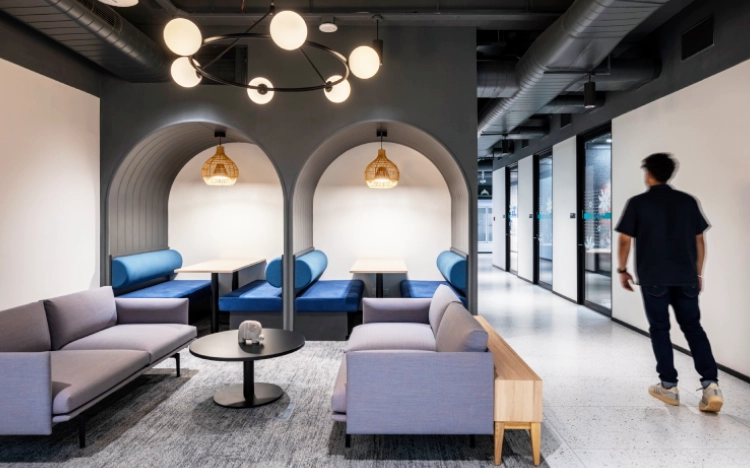
To create effective focus spaces in the workplace, organizations should prioritize creating a balance between open and closed work areas. Open spaces can promote collaboration and communication, but they can also be noisy and distracting. Closed spaces, on the other hand, can provide the privacy and quiet needed for focused work, but they can also feel isolating and cut employees off from important social interactions. To strike the right balance, organizations should design workspaces that offer a range of options, including private offices or workstations, quiet rooms, and collaborative areas. Therefore, employees can choose the space that best meets their needs at any given time.
Organizations can undertake certain fundamental design initiatives as mentioned below, to create focus spaces in their office.
- Acoustic Planning
- Colors and Textures
- Biophilic Interior Design
- Sufficient Lighting
- Ergonomic Furniture
Noise is one of the most significant distractions in a workplace environment. To create a focus space, organizations need to manage noise levels effectively. They can do so by incorporating sound-absorbing materials such as carpets, curtains, or acoustic panels in their office design. Acoustic panels or tiles can be installed on the walls or ceiling to reduce noise levels and enable employees to concentrate. Sound masking technology can also be used to create a more pleasant ambient sound that masks unwanted noise.
Colors have a significant impact on our emotions and cognitive abilities. The right color scheme can help create a calming and focused environment, while the wrong colors can cause stress and distractions. Soft, neutral colors such as white, beige, or light gray are excellent choices for walls and furniture as they create a soothing and calming atmosphere. Conversely, bright colors like red, orange, or yellow should be avoided as they can be overstimulating and cause distractions.
Incorporating biophilic design elements, such as plants, natural light, and water features, can help create a more relaxed and focused work environment. For example, adding plants to focus spaces can help purify the air, reduce stress levels, and increase productivity. Organizations can also consider adding natural materials such as wood, bamboo, and cork through furniture and decor. Additionally, incorporating biophilic design elements into focus spaces can also help employees feel more connected to nature, even while working indoors.
Poor lighting in the workplace can lead to eye strain, headaches, and even depression, while appropriate lighting can improve mood, energy levels, and most importantly, the focus of employees. Natural light is ideal, but when that’s not possible, a combination of ambient and task lighting can help create a comfortable and functional space. Additionally, using matte finishes on surfaces and furniture can help reduce glare and create a more comfortable and focused work environment.
Comfortable furniture is essential to creating a focus space that employees will want to use. Ergonomic chairs and desks that support good posture and reduce strain on the body are crucial for this purpose. Footrests, lumbar support cushions, and armrests can also be provided for additional comfort. Adjustable furniture can allow employees to customize their work environment to their specific needs. Additionally, standing desks are becoming increasingly popular, as they help improve circulation and reduce the risks associated with prolonged sitting.
Types of Focus Spaces
Focus spaces enable employees to disengage from the rest of the office and tend to the task at hand. The table below entails a comparison of some prominent focus spaces based on various parameters.
| Types of Focus Spaces | ||||
|---|---|---|---|---|
| Parameter | Individual Pods | Cubicles | Cabins | Standing Desks |
| Purpose | Individual pods are small, enclosed spaces equipped with a desk and chair for employees to work in isolation. | Cubicles are semi-enclosed spaces that are separated from the office through half-height partitions. | Cabins are fully enclosed workspaces that are typically used by higher level executives in an organization. | Standing desks offer a flexible workspace option that allows employees to stand and work in a private space. |
| Noise Cancellation | Pod interiors are typically cladded with acoustic panels to reduce external noise. | Since they are semi-enclosed, cubicles can offer a limited amount of noise reduction. | They often come equipped with soundproof walls to reduce external noise | They can offer noise cancellation based on the location of the desks. |
| Privacy | They offer complete privacy and are perfect for taking up confidential calls. | Cubicles are semi-open spaces and therefore offer limited private space. | Cabins provide the highest level of privacy and are suitable for hosting meetings. | Standing desks can provide privacy based on the work desk design and layout. |
| Availability of light | Availability of light can vary, depending on the specific design of the pod. | Lighting in cubicles is usually provided by overhead lighting or desk lamps. | Cabins are often designed with windows or artificial lighting to aid illumination. | Standing desks often come with adjustable lighting options to suit user comfort. |
| Ergonomics | Ergonomics may be less of a priority in individual pods, as they are meant for short-term use so that employees take a quick break from their desk. | Cubicles promote an ergonomic design by housing adjustable chairs to promote good posture and reduce strain on the body. | They are usually equipped with various furniture pieces and the user can select between seats and find their comfort. | They promote physical activity and reduce sedentary behavior, allowing employees to avoid long hours of sitting. |
Key Takeaways
Creating focus spaces requires the active involvement of employees in the design process. By soliciting feedback from employees about their work habits and preferences, organizations can better understand their needs and preferences, and create workspaces that support them. This might include conducting surveys, focus groups, or one-on-one meetings to gather feedback.
In today’s fast-paced and constantly evolving workplace landscape, focus spaces are becoming increasingly important. By investing in the design and creation of focus spaces, organizations can not only improve productivity, but also enhance employee satisfaction and retention. Ultimately, this can lead to a more positive work environment and a stronger, more successful organization.
Transform your workplace with focus spaces designed for productivity. Contact us today for expert design solutions!
Related Reads:
How Private Working Spaces Can Boost Productivity
Pivot Space: Making Workspaces Safe and Healthy for All
Pragya Sharma, is a talented architectural writer and an invaluable content collaborator at Zyeta. She expresses her thoughts and ideas effectively across various mediums like blogs, social media, web content, and workshops. By joining forces with Zyeta, she creates compelling narratives that amplify the evolving importance of design in today's world.

